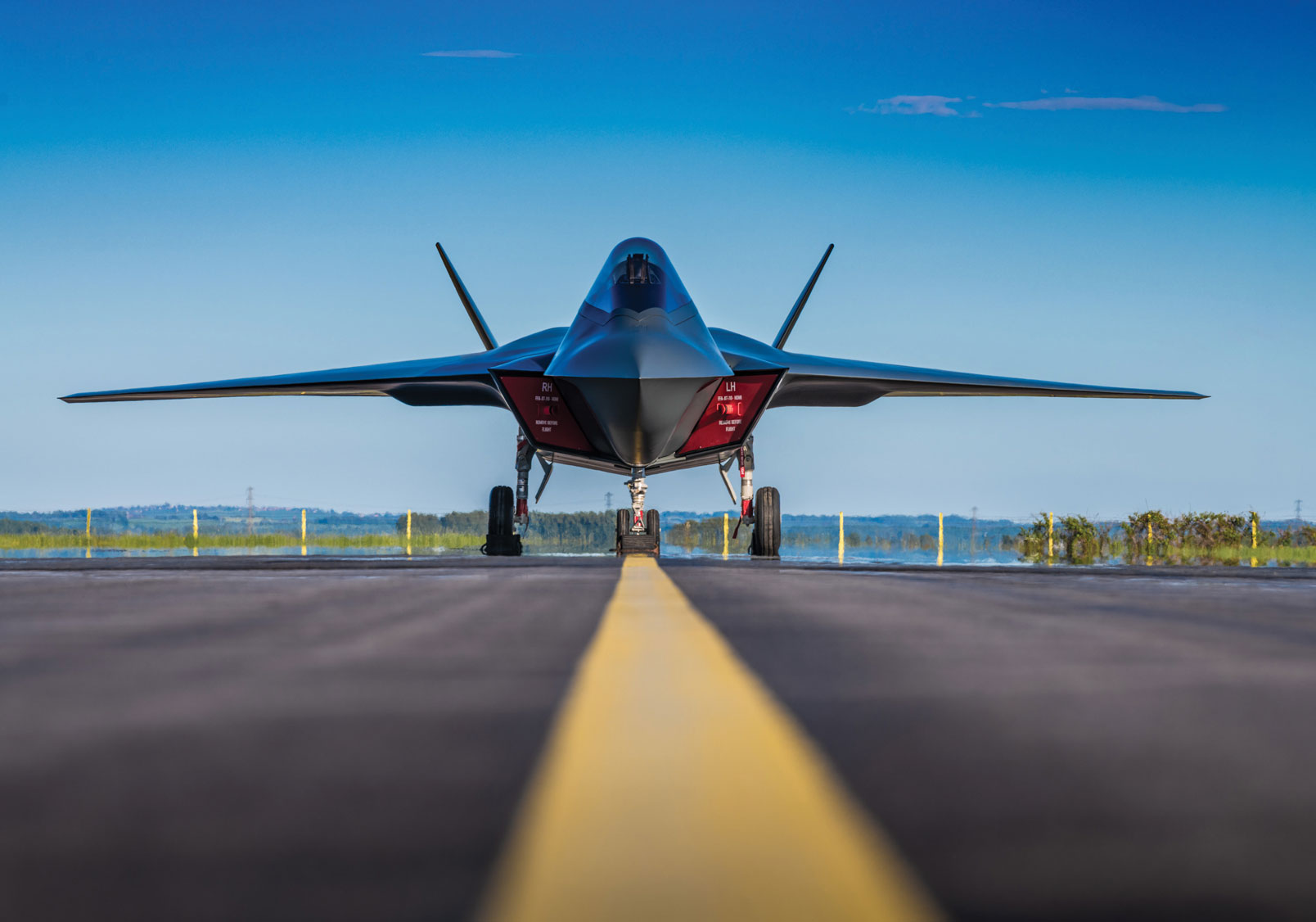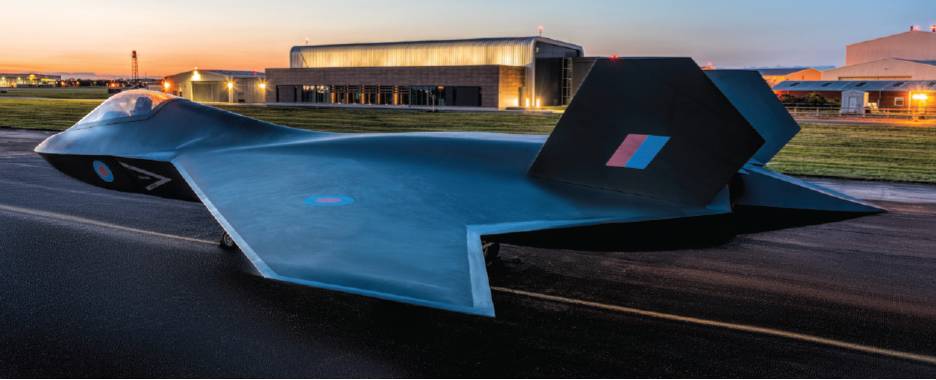DEFENCE Team Tempest
Tempest fugit
Two years on from its official public reveal, TIM ROBINSON FRAeS looks at progress on the UK-led Tempest future combat aircraft programme – a project aimed at nothing less than disrupting traditional ways of designing and developing a next-generation fighter – with collaboration and export potential at its heart.
 BAE Systems
BAE Systems
Two years ago a stealthy grey shape in the form of a mock-up of the Future Combat Air System Technology Initiative (FCAS TI) Tempest broke cover at Farnborough Air Show – drawing gasps of surprise and generating headlines around the world. Conceived as part of the UK’s Combat Air strategy, Tempest is aiming to produce a stealth fighter that will enter service in 2035 and eventually replace the Eurofighter Typhoon in RAF service – as an affordable, flexible/upgradable and exportable military platform. Though the term ‘sixth generation’ combat aircraft is somewhat nebulous, Tempest will incorporate next-generation advanced technologies, such as an augmented reality cockpit, modular payload bay, hypersonics and directed energy weapons. But it also is aiming to rewrite the iron laws of increasing cost and schedule slippage in military procurement – by halving the development time. Tempest also stands for new models of collaboration and partnerships, both nationally and internationally, that are upending traditional ideas of technology transfer and acquisition.
The Team Tempest consortium, consisting of BAE Systems, Leonardo UK, Rolls-Royce, MBDA and the MoD in the form of the RAF’s Rapid Capabilities Office, has already been joined by international partners in the shape of Italy and Sweden. Some 1,800 people are now working on the programme and this is set to expand to 2,500 in the next year. It is also worth noting that, as well as the main partners in the Tempest consortium, the whole enterprise now involves around 300 companies, which, as well as traditional aerospace suppliers, also include video gaming firms (Epic Games) and F1 motorsport spinoffs (Williams Advanced Engineering).
The Tempest outline business case (equivalent to the traditional MoD ‘Main Gate’ approval) is due to be submitted by the end of the year, with a full business case due by 2025. Ten years later, IOC (initial operating capability) is scheduled, making for a very aggressive timescale. (In comparison, the X-35 first flew in 2000, 20 years before the RAF’s 617Sqn declared the F-35B operational for UK Carrier Strike this year.) The next key milestone will be April 2021 with the launch of the Concept and Assessment phase.

